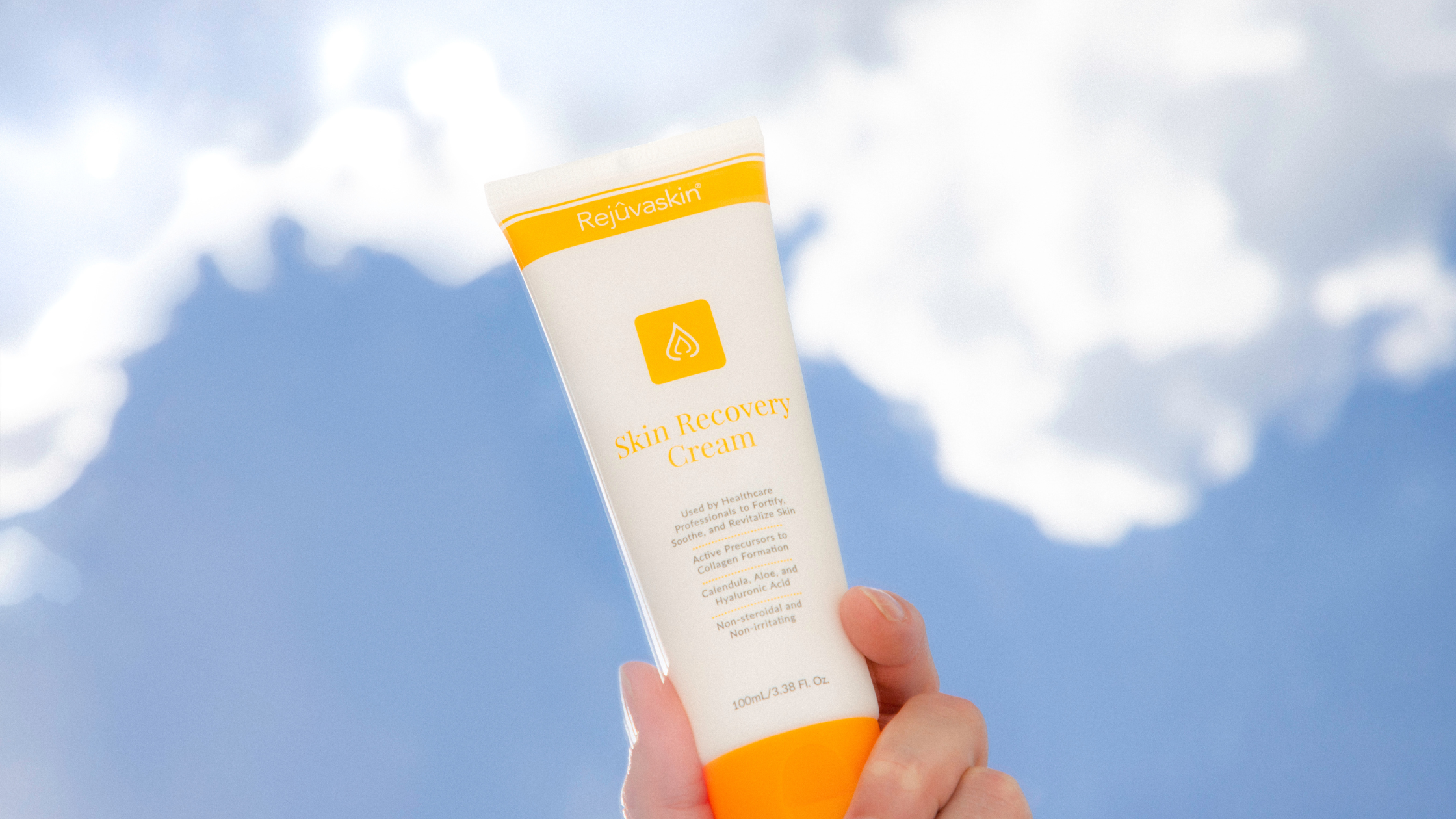Science-Backed Recovery: Unlock Radiant Results Post-Treatment
Aesthetic treatments like microneedling, chemical peels, and laser resurfacing can transform your skin, but proper recovery is essential to maximize results. Rejûvaskin’s Skin Recovery Cream, formulated with clinically backed ingredients, soothes irritation, supports healing, and accelerates your journey to glowing skin. Here’s what the science says about effective post-treatment care.
Why Post-Treatment Recovery Is Critical
Procedures like microneedling and chemical peels create controlled micro-injuries in the skin to stimulate collagen production and improve texture. However, the skin barrier is temporarily weakened, making hydration, inflammation management, and barrier repair vital for optimal healing.
Studies show that hydrating agents, anti-inflammatory botanicals, and barrier-repair ingredients significantly enhance recovery, reduce irritation, and improve outcomes (Addor et al., 2021).
The Science Behind Rejûvaskin’s Skin Recovery Cream
Rejûvaskin’s Skin Recovery Cream is powered by carefully chosen ingredients proven to accelerate healing and reduce irritation:
-
Bamboo, Pea, and Glucosamine:
- These ingredients work synergistically to rebuild and support your skin’s structure by promoting collagen production. Collagen is essential for skin strength and elasticity, especially during the repair process (Rauso, 2018).
-
Calendula Flower Extract:
- Calendula is rich in flavonoids that reduce inflammation and soothe redness. Clinical studies confirm its effectiveness in managing post-procedure erythema and irritation (Saint Aroman et al., 2018).
-
Hyaluronic Acid (Sodium Hyaluronate):
- Known for its ability to retain up to 1,000 times its weight in water, hyaluronic acid deeply hydrates the skin. Studies highlight its ability to reduce transepidermal water loss (TEWL), promoting faster recovery and alleviating dryness after treatments (Brown et al., 1989).
-
Aloe Vera:
- Aloe vera is celebrated for its soothing and hydrating properties. Research shows that it reduces inflammation and accelerates epithelialization, making it ideal for post-treatment skin (Loden, 1997).
5 Science-Backed Tips for Faster Healing
1. Moisturize Consistently
Rejûvaskin’s Skin Recovery Cream provides the hydration your skin needs to repair effectively. Ingredients like hyaluronic acid and aloe vera ensure your skin stays moisturized, minimizing dryness and peeling.
2. Calm Inflammation and Redness
Calendula flower extract, with its anti-inflammatory properties, reduces redness and swelling, helping you heal comfortably.
3. Avoid Harsh Ingredients
Skip exfoliants, retinoids, and alcohol-based products, which can disrupt the healing process. Let the gentle ingredients in Skin Recovery Cream do the work.
4. Protect Your Skin from UV Damage
Healing skin is highly sensitive to the sun. Pair your cream with a broad-spectrum SPF to prevent pigmentation and delays in recovery.
5. Be Consistent
Science shows that regular use of post-treatment products accelerates recovery. Apply Skin Recovery Cream twice daily for the best results.
Why Choose Rejûvaskin’s Skin Recovery Cream?
Rejûvaskin’s commitment to effective, gentle skincare is evident in its ingredient choices. Here’s what sets Skin Recovery Cream apart:
-
Scientifically Supported Ingredients: Featuring bamboo, pea, glucosamine, and calendula flower, all clinically proven to enhance recovery.
-
Dermatologist Recommended: Developed with sensitive, post-treatment skin in mind.
-
Gentle and Safe: Free from harsh chemicals, suitable for all skin types.
Your Skin’s Recovery Starts Here
The right post-treatment care is your key to radiant, healthy skin. With Rejûvaskin’s Skin Recovery Cream, you’re not only speeding up healing—you’re ensuring long-lasting results and a smoother recovery process.
Works Cited
- Addor, F., et al. (2021). Efficacy of topical dexpanthenol-containing products. Cosmetics. link
- Rauso, R. (2018). Hyaluronic acid gel for wound healing. Cosmetology Journal. link
- Saint Aroman, M., et al. (2018). Efficacy of oat extracts in post-treatment recovery. Clinical, Cosmetic, and Investigational Dermatology. link
- Brown, G., et al. (1989). Enhancement of wound healing by topical treatment with epidermal growth factor. The New England Journal of Medicine. link
- Loden, M. (1997). Barrier recovery and influence of irritant stimuli in skin treated with a moisturizing cream. Contact Dermatitis. link





















Leave a comment